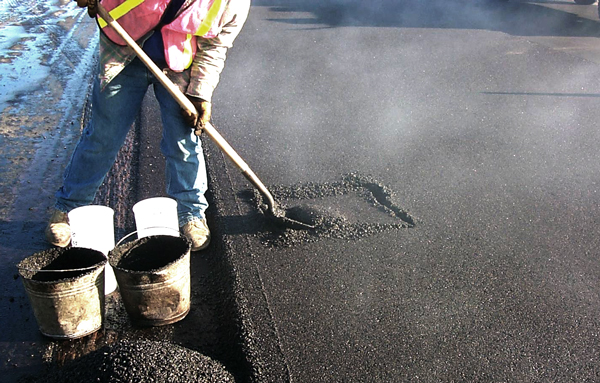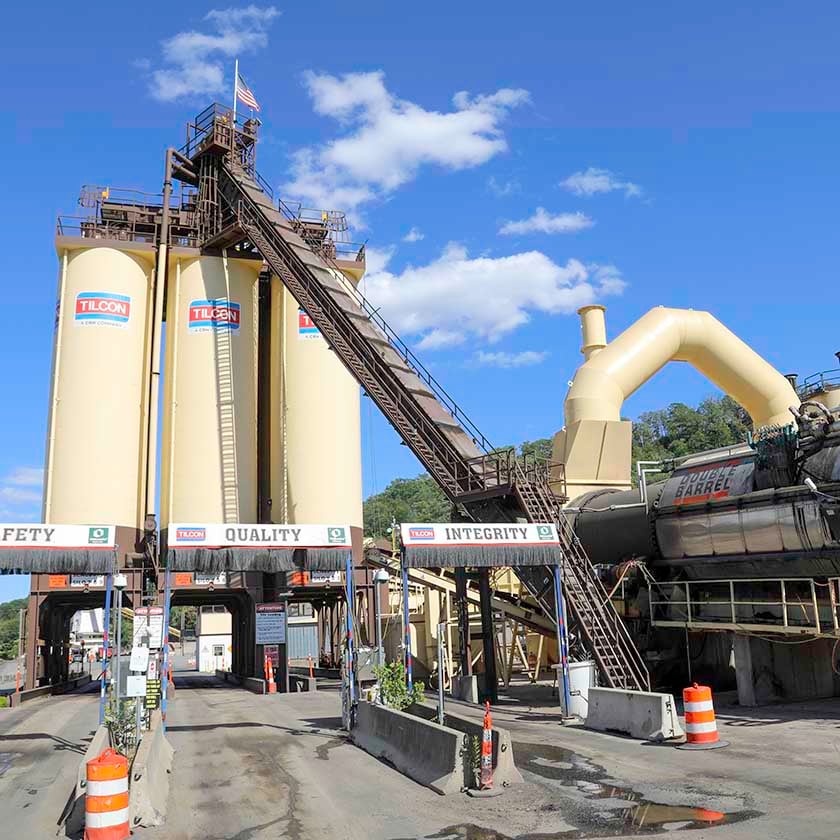Hot Mix Asphalt Paving: Your Entrance to Premium Angled Parking Solutions
Hot Mix Asphalt Paving: Your Entrance to Premium Angled Parking Solutions
Blog Article
Unlocking the Tricks of Hot Mix Asphalt Innovation
Checking out the midsts of hot mix asphalt innovation discovers a globe where meticulous procedures and accurate formulas merge to shape our roads and facilities. The fusion of aggregates, fillers, and binders isn't simply a building task but a strategic orchestration of resilience and efficiency. As we peer right into the detailed dancing of elements, a tapestry of resilience and sustainability unravels. Yet what lies below this surface of asphaltic proficiency, and what tricks wait to be unveiled in the realm of paving innovations?
Relevance of Hot Mix Asphalt
Warm Mix Asphalt plays a critical function in modern-day infrastructure growth due to its longevity and cost-effectiveness. As the most generally used leading material for roadways, freeways, and parking area, Hot Mix Asphalt supplies a series of advantages that add to its significance in building and construction jobs. One key advantage is its capacity to stand up to heavy web traffic loads and rough weather, supplying a reputable and durable surface area for transportation networks. In Addition, Warm Mix Asphalt is affordable in both first building and construction and long-term maintenance, making it a favored option for several framework projects.
The durability of Warm Mix Asphalt stems from its structure, which includes accumulations, binder, and filler materials that are meticulously chosen and mixed to fulfill particular efficiency demands. Overall, the value of Hot Mix Asphalt in framework advancement can not be understated, as it proceeds to be a cornerstone of modern-day construction techniques.
Components of Asphalt Mixes
The make-up of asphalt mixes contains thoroughly selected accumulations, binder, and filler materials that are vital for accomplishing details performance needs. Aggregates are the key element of asphalt mixes, supplying strength and security. These aggregates can be all-natural, such as gravel or crushed rock, or synthetic, like recycled products from old pavements. The binder, normally bitumen or asphalt concrete, holds the accumulations together and offers adaptability and resilience to the mix. The option of the binder is important as it straight affects the mix's performance in different climate problems. Fillers, such as hydrated lime or Portland cement, are made use of to boost the mix's workability and aging resistance. Angled Parking.
The mix and percentage of these parts play a significant role in identifying the high quality and performance of the asphalt mix. Engineers thoroughly develop the mix to satisfy particular demands, thinking about elements like web traffic volume, climate conditions, and pavement life-span. Correct option and harmonizing of aggregates, binder, and fillers are vital for producing resilient, lasting asphalt pavements.
Combining and Manufacturing Methods

Once the aggregates are selected, the binder, typically asphalt cement, is contributed to bind the materials together. The binder's quality and quantity considerably impact the mix's adaptability, toughness, and resistance to environmental elements. Additionally, fillers like moisturized lime or Rose city cement may be incorporated to enhance details features of the asphalt mix, such as its workability or dampness resistance.
During production, the accumulations and binder are warmed, commonly in between 250-325 ° F(121-163 ° C ), to assist in blending and make sure appropriate finishing of the aggregates. The mixing procedure must be comprehensive to achieve a homogeneous combination that advertises the wanted efficiency attributes of the asphalt. Numerous methods, such as set blending or drum blending, are utilized to achieve consistent and high-quality asphalt mixes for building and construction tasks.
Aspects Affecting Asphalt Performance
Aspects affecting asphalt performance incorporate a variety of variables that affect the sturdiness, longevity, and overall high quality of asphalt pavements. One key variable is the high quality of materials used in the asphalt mix. The kind and resource of accumulations, the binder quality, and the ingredients all play a substantial duty in figuring out the performance of the asphalt sidewalk. The gradation of accumulations is vital as it impacts the mix's resistance, security, and workability to rutting and fracturing.

Layout factors to consider, such as pavement thickness and drainage, are vital in making sure the lasting efficiency of the asphalt sidewalk. By meticulously considering these engineers, aspects and specialists can maximize asphalt efficiency and improve the solution life of pavements.
Sustainable Practices in Asphalt Technology

In addition, the growth of warm-mix asphalt (WMA) modern technologies has actually acquired traction in current years. WMA enables the production and placement of asphalt blends at reduced temperatures compared to traditional hot-mix asphalt, causing minimized energy intake and greenhouse gas discharges. The use of permeable asphalt mixes can aid alleviate stormwater runoff concerns by enabling water to penetrate with the sidewalk and into the ground, advertising natural water purification and charge procedures. By executing these lasting methods, the asphalt sector can add to building a much more eco-friendly and resilient framework network.
Verdict
In verdict, warm mix asphalt modern technology plays an essential duty in modern-day infrastructure advancement because of its longevity and cost-effectiveness. By carefully balancing components, employing proper mixing techniques, and considering various factors, designers can develop high-quality asphalt blends that withstand hefty website traffic lots and rough weather. Accepting sustainable practices, such as using warm-mix modern technologies and recycled products, additionally improves the environmental kindness of asphalt modern technology.
Mixing and production strategies visit this site right here in warm mix asphalt innovation involve the specific mix and processing of aggregates, binder, and fillers to develop a long lasting and high-performance asphalt mix.Factors affecting asphalt performance encompass an array of variables that affect the resilience, long life, and general quality of asphalt sidewalks. Sustainable practices in asphalt innovation encompass numerous efforts intended at minimizing the environmental effect of asphalt production and paving procedures. By incorporating redeemed asphalt pavement (RAP) and recycled asphalt tiles (RAS) into brand-new asphalt mixes, the sector can considerably reduce the usage index of raw materials and power, while also reducing landfill waste.
WMA enables for the production and positioning of asphalt mixes at reduced temperatures contrasted to traditional hot-mix asphalt, resulting in lowered energy intake and greenhouse gas discharges.
Report this page